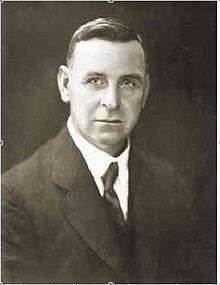South Australian state election, 1933
South Australian state election, 1933

|
| 8 April 1933 (1933-04-08) |
|
|
|
|
|
State elections were held in South Australia on 8 April 1933. All 46 seats in the South Australian House of Assembly were up for election. The incumbent Australian Labor Party government led by Premier Robert Richards was defeated by the opposition Liberal and Country League led by Leader of the Opposition Richard L. Butler. Each district elected multiple members.
Background
After the Labor government of Premier Lionel Hill endorsed the controversial Premiers' Plan following the start of the Great Depression and the subsequent Australian Labor Party split of 1931, the ALP state executive expelled 23 of the 30 members of the ALP caucus. The expelled MPs formed the Parliamentary Labor Party (also known as Premiers Plan Labor), with Hill as leader, and continued in office with the support of the Liberal Federation under Butler.
Amid increasing riots and protests, as well as skyrocketing unemployment, Hill left politics to become Australian Agent-General to the United Kingdom. He was succeeded by Robert Richards, who had the impossible task of leading the party into the election.
With three Labor factions—the official ALP, Premiers Plan Labor and Lang Labor—contesting the election, the result was a landslide victory for the newly created Liberal and Country League, which had formed from a 1932 merger of the Liberal Federation and the Country Party under Butler's leadership. The LCL won 29 seats versus only 13 for the three Labor factions combined. Though the Labor split in South Australia would only last until 1934, this would be the start of 32 years of LCL government in South Australia--one of the longest unbroken runs for a governing party in the Commonwealth. The LCL would stay in office with the assistance of a pro-LCL electoral malapportionment known as the Playmander, which would be introduced in 1936.
See also
References


.gif)
